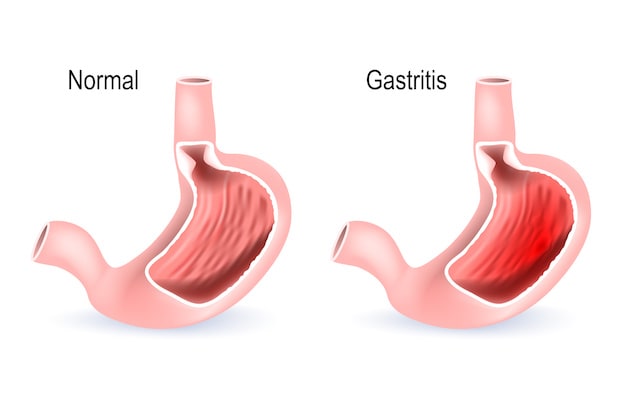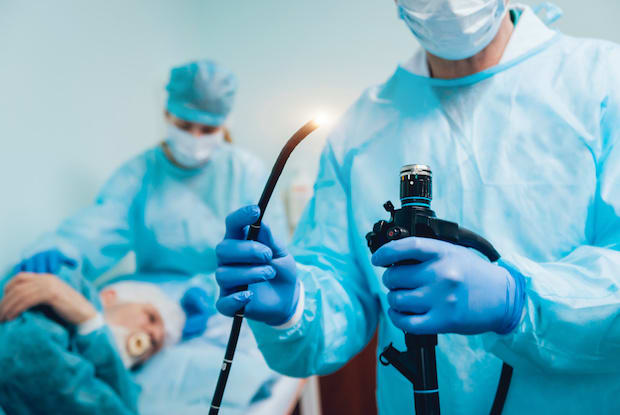Table of Contents
What is Motilium?
Motilium (domperidone) may not be a familiar drug in the United States, but it can be incredibly helpful in the treatment of intestinal disorders. Intestinal motility disorders refer to abnormal intestinal contractions, including spasms and intestinal paralysis (lack of movement). These disorders occur when the intestines have lost the ability to coordinate muscular activity.
The stomach is complex, and these movements allow proper digestion of the stomach contents. These muscle movements also help move the stomach contents along the digestive tract. This coordination (motility) is generated through nerves and muscles within the gastrointestinal walls. [1]
A lack of coordination in this system can lead to several issues and discomfort. This is where Motilium comes in. Motilium can be used to treat certain intestinal motility disorders, including gastroparesis, gastritis, and symptoms of nausea and vomiting. Motilium works by increasing movement through the digestive system. This increase in movement reduces bloating, fullness, and indigestion. Motilium also blocks a chemical in the brain that causes nausea and vomiting. [2]
Motilium is an antiemetic, which is typically used to treat motion sickness, opioid analgesics, general anesthetics, chemotherapy drugs, and drugs used in the treatment of Parkinson’s disease. This drug is typically used under the direct supervision of a doctor. [3]
Currently, Motilium is not available in the United States but can be purchased through a Canadian Pharmacy like Canadian Med Center with a doctor’s prescription. Taking Motilium can benefit the often painful and uncomfortable effects of intestinal problems. Read on to learn about the uses of Motilium and the conditions it treats.

Gastritis
Gastritis characterizes several conditions that result in stomach lining inflammation. It is caused by the erosion of the stomach's lining and can occur suddenly (acute) or gradually (chronic). The most common causes of gastritis include anti-inflammatory drugs, chronic vomiting, excessive alcohol use, and certain bacterial infections. Helicobacter pylori (H. pylori) is a bacterium that can get into the body and live in the lining of the stomach. Over time, this type of bacteria can cause ulcers (sores), stomach infections, and sometimes cancer. Bile reflux can also result in gastritis. Bile reflux occurs when bile flows back up from the stomach into the bile tract. All of these conditions can result in stomach lining inflammation. [4]
If left untreated, gastritis can be a dangerous condition. It can lead to severe blood loss and significantly increase a person’s risk of stomach cancer. Symptoms of gastritis can include:
- Indigestion
- Vomiting
- Nausea
- Abdominal pain
- Loss of appetite
- Black, tarry stools
- Hiccups
- Loss of appetite
- Burning feeling in the stomach [4]

a. Diagnosis and Treatment
Gastritis can be challenging to diagnose because it sometimes does not present any symptoms at all. If you do believe you are suffering from gastritis, your doctor may perform the following tests:
Upper endoscopy: This test involves the insertion of an endoscope (a thin tube with a camera at the end) through the mouth and stomach. The endoscope will allow the doctor to view the stomach lining and determine if inflammation is present.
Fecal occult blood test (stool test): Inflammation of the stomach lining can result in internal bleeding and blood in the stool. This test checks for the presence of blood in the stool.
Blood Tests: Doctors may perform several blood tests to check your red blood cell count to determine whether you have anemia. Being anemic means there are not enough red blood cells in the system. Blood tests can also determine if bacteria like H. pylori is causing an infection in the body. [4]
Luckily, there are several treatment options for gastritis. Treatment depends on the cause of your gastritis. Diet has a big effect on treating gastritis, and it is best to avoid hot and spicy foods to prevent further stomach inflammation. When caused by bacterial infections, you may require antibiotics and acid-blocking drugs to prevent heartburn. Motilium can benefit gastritis patients by reducing vomiting and preventing further inflammation of the stomach lining. [5]
Gastroparesis
Gastroparesis is a condition in which the stomach cannot empty itself of food correctly. This condition is not very common, affecting 10 men and 40 women out of 100,000 people. [6] People can have diabetic as well as non-diabetic gastroparesis. This condition occurs when the vagus nerve becomes damaged. This nerve is essential in the control of the heart, lungs, and digestive tract. Long-term type 1 and type 2 diabetes can cause nerve damage over time, making this condition common in those living with diabetes. [6]
When the vagus nerve is working properly, it tightens the stomach muscles to move food through the digestive tract. When the vagus nerve is damaged, the stomach and intestine coordination does not work properly and keeps the food from moving from the stomach to the intestines. Other causes of gastroparesis include viral infections, abdominal surgery, amyloidosis (protein fiber deposits in tissues and organs), and scleroderma (connective tissue disorder).
Symptoms of gastroparesis can include:
- Poor appetite and weight loss
- Vomiting undigested food
- Poor blood sugar control
- Heartburn or gastroesophageal reflux
- Nausea
- Stomach spasms
- Bloating [7]
a. Diagnosis and Treatment
The stomach is a complicated organ, and several tests are needed to diagnose gastroparesis and rule out other stomach conditions. Some common tests include:
Gastric emptying study: This test involves eating a light meal that contains a small amount of radioactive material. Once the meal is eaten, a scanner will detect the radioactive material's movement to show how quickly the food leaves the stomach.
Upper gastrointestinal (GI) endoscopy: An endoscopy (a tube with a tiny camera at the end) is inserted into the esophagus, stomach, and small intestine to diagnose ulcers and examine the upper digestive systems.

Ultrasound: High-frequency sound waves are used to produce images within the body. An ultrasound can help diagnose stomach problems as well as problems with the gallbladder and kidneys. [8]
Adequate nutrition is the most important part of treating gastroparesis. This condition can be treated well with diet changes, and you may be referred to a dietician to help with your gastroparesis. It is essential to drink lots of water and avoid carbonated drinks and alcohol. Starches can also be beneficial in a healthy gastroparesis treatment plan. When taking Motilium for gastroparesis, take the medication 15 to 30 minutes before a meal and before sleep if necessary.
Some surgical treatments may be necessary if the body cannot tolerate foods or liquids. Feeding tubes may be temporarily placed in the small intestine when blood sugars cannot be controlled by any other method. Doctors may also recommend a gastric venting tube to help relieve pressure from gastric contents. [8]
The content in this article is intended for informational purposes only. This website does not provide medical advice. In all circumstances, you should always seek the advice of your physician and/or other qualified health professionals(s) for drug, medical condition, or treatment advice. The content provided on this website is not a substitute for professional medical advice, diagnosis or treatment.
